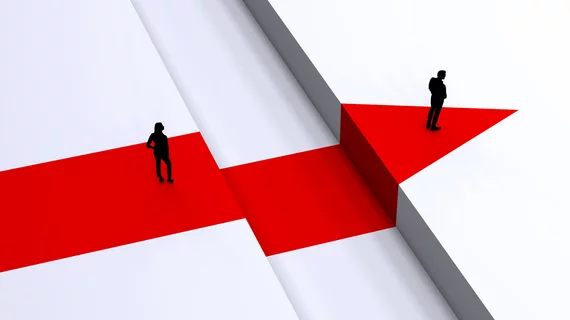Workload, pay reassessments may be necessary to address career satisfaction gaps between academic and private practice radiology
Workload and pay reassessments should be considered to help address gaps between academic and private practice radiology, according to survey results published Friday in JACR [1].
Physicians in academia reported a higher volume of image readings per month than those in private practice alongside heavier demands from conferences and other tasks unrelated to clinical work. This added pressure produced lower survey scores for career satisfaction and higher marks for burnout among academics, the study found.
Findings were derived from a poll of 642 radiologists in Korea, conducted in August 2022. Researchers believe the results have applicability in the United States and elsewhere abroad, with burnout a “universal concern” among members of the specialty.
“This situation can lead to job dissatisfaction, burnout, and adverse effects on research and education,” Hyun Jung Koo, MD, PhD, and Kyung-Hyun Do, MD, PhD, with the Department of Radiology at the University of Ulsan, South Korea, wrote Sept. 29. “These challenges resonate with the findings in our study, where academic radiologists in Korea also face significant work-related stress and burnout. By considering these [previously published] studies alongside our findings, we can gain a broader understanding of the global impact of burnout and explore potential strategies to address this issue.”
Researchers administered the Google survey last summer to members of the Korean Society of Radiology. Respondents included 511 board-certified physicians and 131 trainees. About 64% of certified radiologists (or 328 individuals) worked in academia at the time of the study and 36% (183 docs) operated in private practice. Nearly half (53%) of academics surveyed were located in Seoul, and 71% of those in private practice were based in areas outside South Korea’s capital city.
One of the “major” findings, the authors noted, was the discrepancy in scans handled between academic and private practice radiology. About 52% of academics reported reading in excess of 800 CT or MRI scans per month, with a lower rate among private practice (34%). Meanwhile, 85% of radiologists in the private realm said they dedicated zero time to research. These numbers may help explain differences in burnout between the two areas of the profession. Almost 72% of radiologists in teaching environments said they’ve experienced such workplace fatigue, compared to 56% outside of colleges and universities.
“That greater burnout rate—potentially a result of the pressure to publish academic papers and a higher workload—could lead to job dissatisfaction and low career satisfaction,” the study’s authors advised. “It is crucial to conduct a comprehensive reassessment of the clinical workload and academic expectations imposed on radiologists. This evaluation should aim to establish a reasonable level of workload that allows for a healthier work-life balance and reduces the risk of burnout. In addition to workload reassessment, addressing pay parity between academic and private practice radiologists is of paramount importance. Recognizing the value and contributions of academic radiologists by improving their compensation can help attract and retain talented professionals within academic settings.”
The most common subspecialties in academia were abdominal/genitourinary (26%), chest/cardiac (20%) and neuroradiology (16%). In contrast, general (62%) and musculoskeletal radiology (16%) were most prevalent among private practice, which also skewed younger, with 58% of physicians between the ages of 20 to 40. On the other side, more than 55% of board-certified radiologists in academia were older than 40, and women made up 57% of respondents in academia versus 34% in private practice.
Read much more about the findings in the Journal of the American College of Radiology at the link below.

